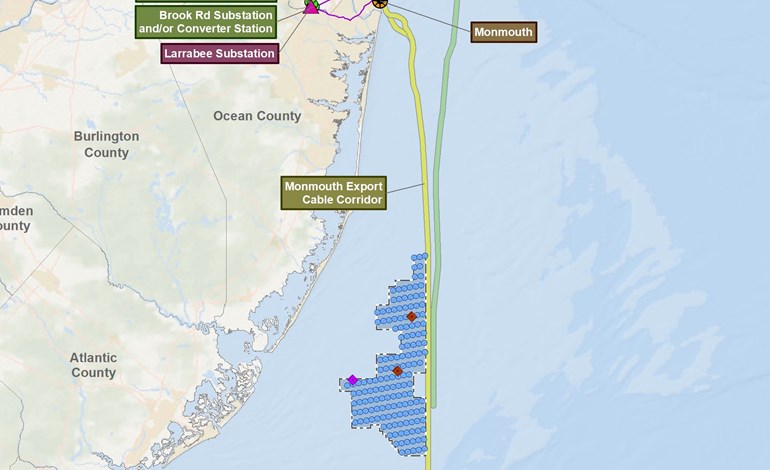The US Bureau of Ocean Energy Management (BOEM) has announced its intention to commence the environmental review of the 1510MW Atlantic Shores wind energy project offshore New Jersey, a joint venture between Shell and EDF Renewables.
On March 18, BOEM will publish a Notice of Intent (NOI) to prepare an environmental impact statement (EIS) for the construction and operations plan (COP) submitted by Atlantic Shores Offshore Wind. This marks the 12th offshore wind energy COP environmental review initiated under the Biden-Harris administration.
The lease area, known as Atlantic Shores North, spans approximately 81,129 acres and is located 8.4 miles from the New Jersey coast and approximately 60 miles from New York. The project proposal includes the installation of up to 157 wind turbines, eight offshore substations, one permanent meteorological tower, and two temporary metocean buoys, totaling up to 168 offshore structures.
Additionally, the COP proposes two potential export cable corridors that would make landfall at Sea Girt, New Jersey, and in either the New York City area or near Asbury Park, New Jersey.
BOEM director Elizabeth Klein stated, “BOEM is continuing to implement the Biden-Harris administration’s clean energy agenda, while maintaining a careful approach to prevent, reduce, and address any adverse effects on ocean users and the marine ecosystem.”
The NOI will be published in the Federal Register on March 18, 2024, initiating a 45-day public comment period ending on May 2, 2024. BOEM has extended the standard 30-day comment period to 45 days to accommodate the Vineyard Northeast NOI 45-day public comment period expected later this month.
Public comments will help identify relevant information for BOEM’s environmental review of the Atlantic Shores North project COP. The agency will review the comments to identify issues and potential alternatives for consideration in the Atlantic Shores North Draft EIS. Throughout the process, the public will have multiple opportunities to provide input on resources, impact-producing factors, reasonable alternatives, and potential mitigating measures to be analyzed in the EIS.

